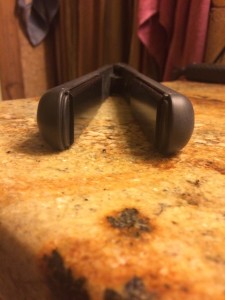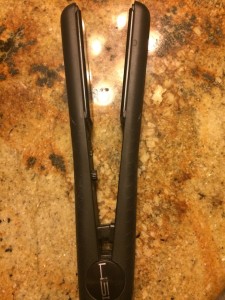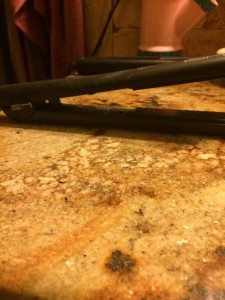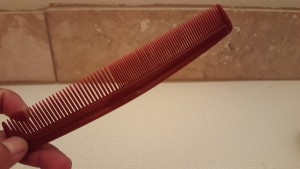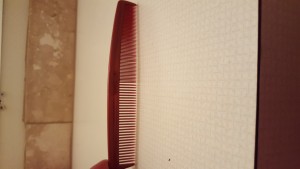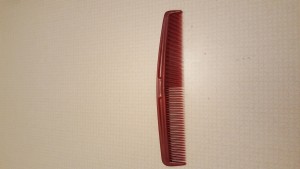I chose my hair straightener.
Description: This object is primarily plastic on the outside. The plates used as the heating elements are made from titanium. Obviously the mechanics of this object are covered inside part of the plastic pieces. There is also a cord to connect it to a electrical source to heat it.
Deduction: This object is used for flattening curly or otherwise un-straight strands of hair with the titanium heated elements. I would assume that it is primarily used by women, since culturally they more often then men, have more hair, hence more to straighten. The largest group to use this item would be women. Primarily located in the bathroom or where a woman would do her hair or makeup. Could also be located in most salons for styling purposes.
Speculation: In a culture where it seems that beauty is held above all else, it would seem that this item was created to perpetuate the value of “beauty”. The idea that fuzzy untamed hair is not beautiful and should or could be flattened, or even the grass is greener on the other side. Those who have straight hair want natural curls, or those who have natural curls want straight hair. I think this item was created in a culture that something you don’t naturally have will make your more appealing if you did have it.
Complex questions:
Will society always value physical beauty as much as we do now?
We all know the grass isn’t always greener on the other side, so why do we as a society strive for something others have that we don’t? In terms of physical beauty?
Is it the object perpetuating the need for physically beautiful attributes or is it us as a society perpetuating it by using the object?
Resources
-Thompson, Cheryl. “Black Women and Identity: What’s Hair Got to Do with It?” Black Women and Identity: What’s Hair Got to Do With It? 2008. Accessed February 18, 2016. http://hdl.handle.net/2027/spo.ark5583.0022.105.
This article talks directly about specifics involving hair, though the discussion revolves around women of African decent. The author talks about how different types of hairstyles define different parts of these women’s lives and identities.
-Tate, Shirley. “Black Beauty: Shade, Hair and Anti-racist Aesthetics.” Ethnic and Racial Studies 30, no. 2 (February 02, 2007): 300-19. Accessed February 18, 2016. Taylor and Francis Online. doi: 10.1080/01419870601143992
This article does not apply as much as the previous one, but it does discuss the afro of African American women being and identifier for again, many aspects of life and identity.
I did not find any articles or blogs discussing a hair straightener or flat iron culture specifically. When using “cultural history of hair straightener” to search, almost all of the articles or blogs or websites that followed were about black women and what hair or hairstyles represented. There were a few articles that discussed black women finding it necessary or societally appealing to wear their naturally curly hair straight to gain some level of elite. The articles talked about flattened or straightened hair for African American woman representing them in a higher class then those with curly or natural hair. I don’t know how the authors of the articles I listed could be related to Prown’s method because there were not talking specifically about the object, but more touching on what the object was capable of creating because of our society.
